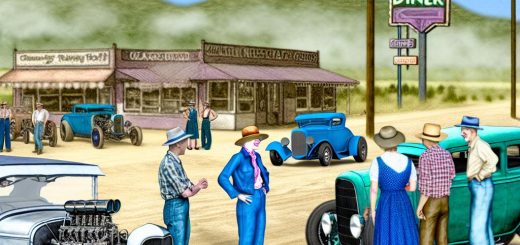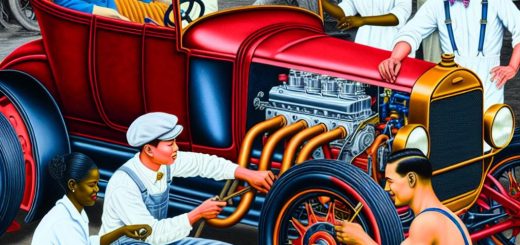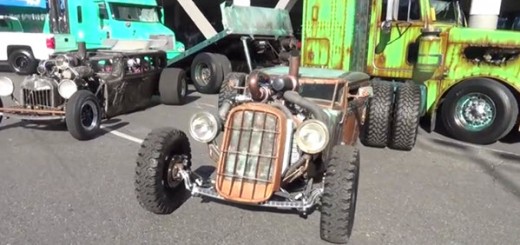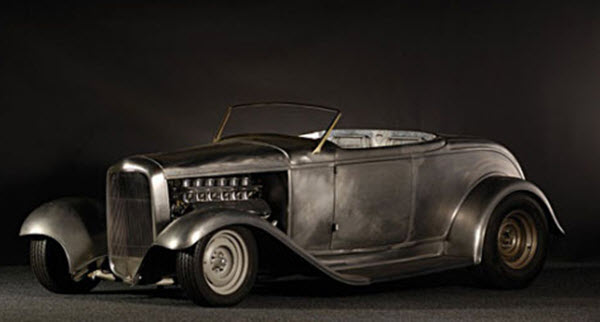Contents
Understanding Hot Rod Cars
Hot rod cars represent a fascinating niche in automotive culture, characterized by their customized and often high-performance nature. Generally, a hot rod refers to a car that has been significantly modified to enhance speed and performance. Rooted deeply in American history, these vehicles symbolize creativity, engineering prowess, and a passion for speed.
Key Characteristics
Modifications and Enhancements
Hot rods are primarily defined by their modifications which aim to boost engine output and overall performance. These automobiles commonly undergo changes such as engine swaps, enhanced suspension systems, and aerodynamic tweaks to improve their agility and speed on both drag strips and highways. Such modifications are not only technical adjustments but also artistic choices, as the appearance upgrades often constitute a significant portion of a hot rod’s allure.
Engine Optimization
One of the central aspects of creating a hot rod is engine optimization. Enthusiasts often start with a powerful engine, such as a V8, due to its inherent high-performance capabilities. From there, they may replace or upgrade components like camshafts, carburetors, fuel systems, and exhaust manifolds. This level of detail ensures that the engine delivers enhanced horsepower and torque, often exceeding the capabilities of stock cars.
Aesthetic Enhancements
Beyond performance, aesthetics play a crucial role in hot rod culture. Many builders invest time and resources into customizing the exterior appearance of their vehicles. This can include vibrant paint jobs, custom bodywork, unique lighting, and bespoke interior designs. While performance may be the heart of hot rodding, its soul often lies in these striking visual personalizations.
Historical Origins
The concept of hot rodding traces back to the early 20th century when automobile enthusiasts began modifying their cars for enhanced performance. The culture gained momentum after World War II, particularly in the United States, where veterans with mechanical skills and a penchant for adrenaline sought to transform mundane vehicles into powerhouses. This era witnessed the rise of makeshift races on the dry lake beds of California, setting the stage for the hot rod movement.
Post-War Influence
Returning soldiers from World War II had a vast array of mechanical skills and many sought to find an outlet for their skills and adrenaline. The booming economy of the 1950s gave people the means to invest in the rapidly developing automotive culture. These transformations were largely independent efforts, relying on creativity and innovation as enthusiasts worked to convert everyday cars into unique speed machines.
Drag Racing
As interest in hot rodding grew, the activity inspired the formal sport of drag racing. What began as informal races along quiet stretches of road eventually evolved into a highly organized motorsport, complete with specialized tracks and governing bodies. The National Hot Rod Association (NHRA), founded in 1951, provided a platform for hot rod racers to compete and share their automotive innovations.
Diverse Styles and Influences
The hot rod spectrum is broad, reflecting a mix of styles and influences. While traditional hot rods adhere to classic designs and often feature vintage components, modern interpretations embrace contemporary engineering marvels. The “rat rod” subculture opts for a more rugged, unfinished look, often flaunting rust and exposed metal. Each style offers a unique expression of both individuality and homage to automotive heritage.
Traditional Hot Rods
Traditional hot rods are built in homage to the cars modified in the early days of the hot rodding movement. They often utilize vintage bodies from the 1920s to 1940s, integrating newer rebuild engines for reliability and performance boosts. The Builders often adhere to period-correct parts and techniques, blending nostalgia with performance.
Rat Rods
Distinct for their intentionally unfinished appearance, rat rods are another popular subgenre within hot rodding. Originating as a counter-culture movement to the sleek, polished aesthetics of show cars, rat rods place emphasis on creativity and rugged designs. Often using parts from a variety of sources, these vehicles tell a story with each element reflecting the personality and vision of the builder.
Modern Hot Rods
These vehicles are where one sees advanced technology merge with classic sensibilities. Modern hot rods often feature cutting-edge engineering solutions, such as electronic fuel injection, advanced aerodynamics, and state-of-the-art suspension systems, allowing for a fusion of power, speed, and safety that traditional designs cannot match.
Legal and Safety Considerations
Modifying cars to achieve hot rod status requires navigating various legal and safety concerns. States and regions have specific regulations governing vehicular modifications, focusing on aspects like emissions, noise levels, and general roadworthiness. Hence, enthusiasts must ensure their creations comply with applicable laws and maintain safety standards to avoid legal repercussions.
Compliance and Safety
Ensuring a hot rod is both safe and legal involves rigorous checks and balances. Regulations often dictate the types and extents to which a vehicle can be modified. Builders must adhere to these guidelines, ensuring crucial components such as brakes, lighting, and structural integrity meet the required safety standards. Moreover, emissions standards must be met to ensure the vehicle is environmentally compliant.
Community and Resources
Given the complexities involved in hot rodding, enthusiasts often rely on robust community networks for support and collaboration. Clubs, forums, and annual gatherings provide indispensable resources for advice, parts swaps, and showcasing projects. Additionally, a wealth of instructional materials available online allows both novices and experts to enhance their understanding and skills progressively.
In conclusion, hot rod cars are a dynamic blend of personal expression, mechanical ingenuity, and historical homage. They are not merely vehicles but symbols of a culture committed to pushing boundaries and celebrating automotive flair. For a more in-depth exploration of hot rod modifications and trends, enthusiasts can explore resources on dedicated automotive sites such as Hot Rod Network.






